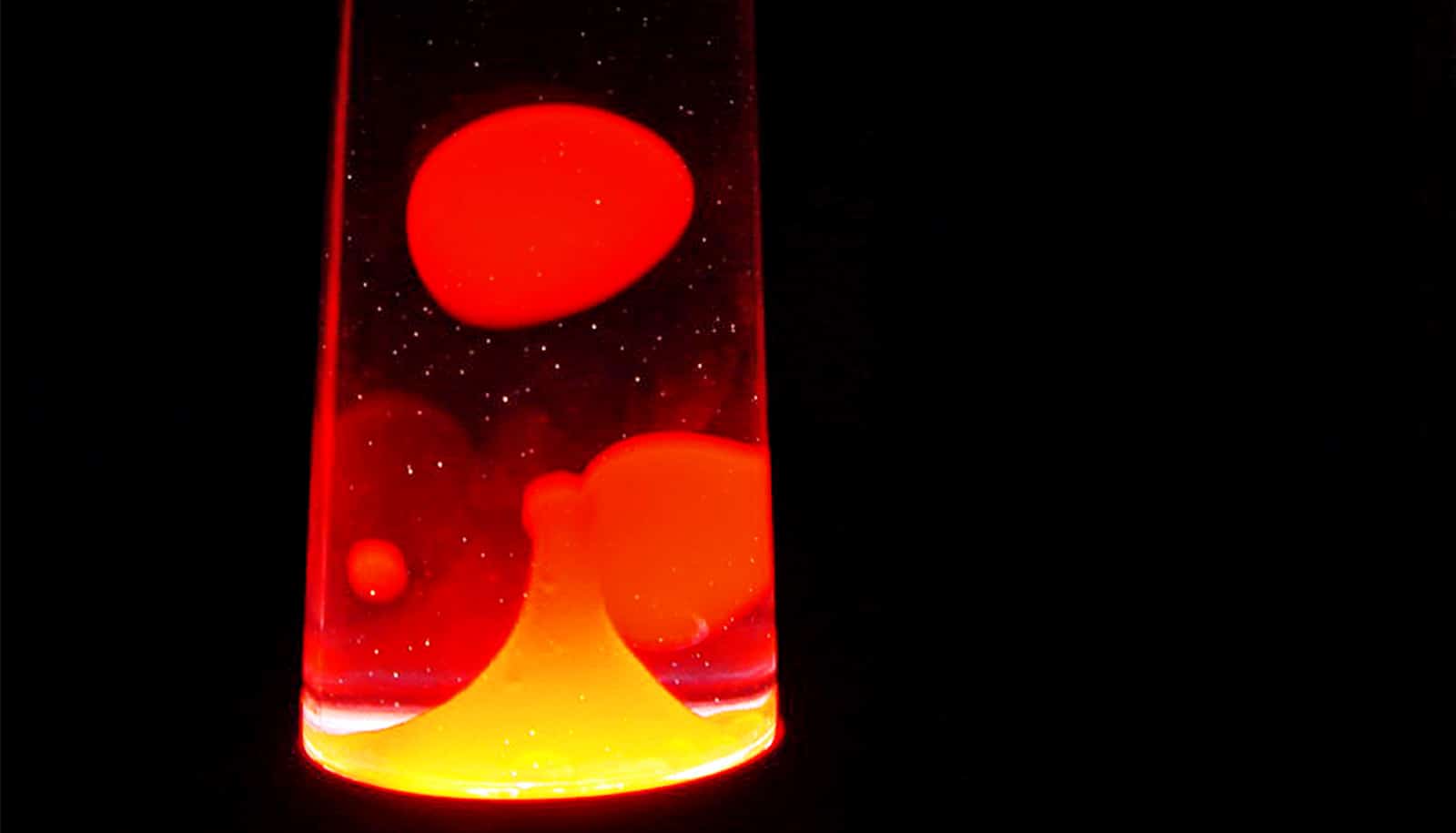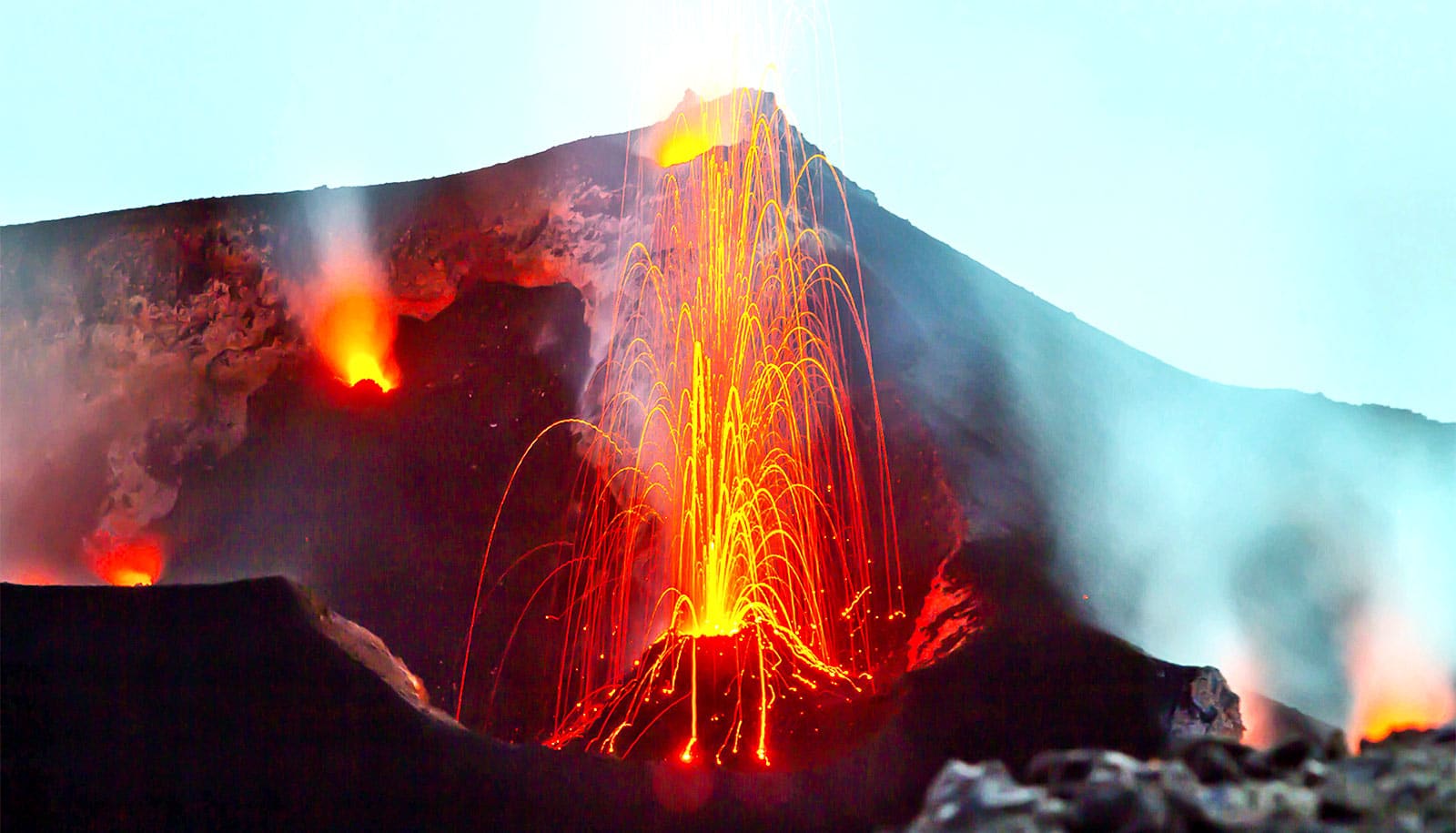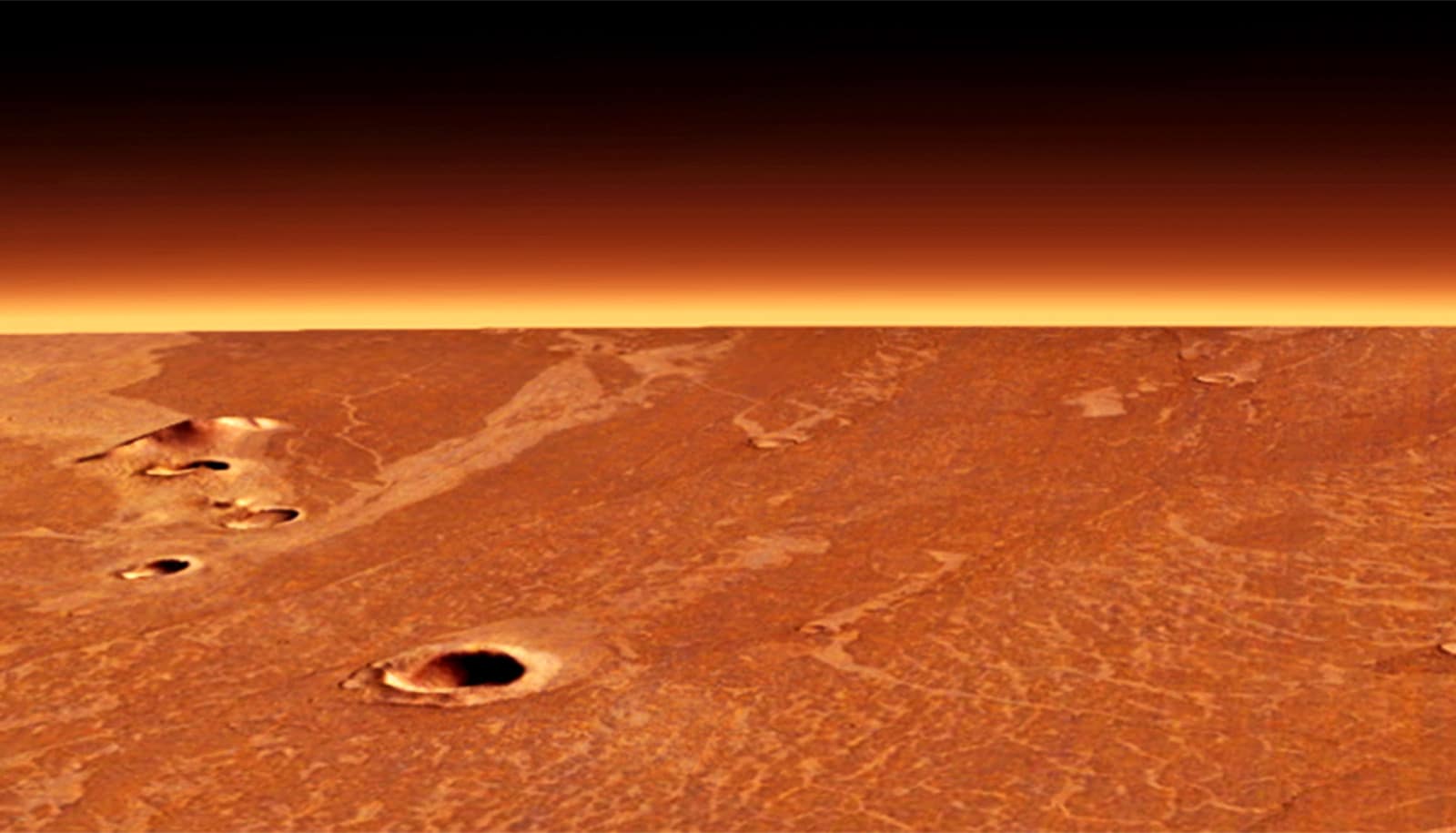
(Credit: Pietro Izzo/Flickr )
Tiny bubbles shed light on massive volcanic eruptions
New research clears up a longstanding question about explosive volcanic eruptions like the ones at Mount St. Helens in 1980.
New research answers a longstanding question about explosive volcanic eruptions like the ones at Mount St. Helens in 1980, the Philippines’ Mount Pinatubo in 1991, or Chile’s Mount Chaitén in 2008.
Microscopic bubbles can tell stories about Earth’s biggest volcanic eruptions. Now, geoscientists have discovered some of those stories are written in nanoparticles.
Geoscientists have long sought to use tiny bubbles in erupted lava and ash to reconstruct some of the conditions, like heat and pressure, that occur in these powerful eruptions. But there’s been a historic disconnect between numerical models that predict how many bubbles will form and the actual amounts of bubbles measured in erupted rocks.
The researchers worked for more than five years to reconcile those differences for Plinian eruptions. Named in honor of Pliny the Younger, the Roman author who described the eruption that destroyed Pompeii in CE 79, Plinian eruptions are some of the most intense and destructive volcanic events.
“Eruption intensity refers to the both the amount of magma that’s erupted and how quickly it comes out,” says Sahand Hajimirza, a postdoctoral researcher and former PhD student in Helge Gonnermann’s lab in the earth, environmental, and planetary sciences department at Rice University.
“The typical intensity of Plinian eruptions ranges from about 10 million kilograms per second to 10 billion kilograms per second. That is equivalent to 5,000 to 5 million pickup trucks per second.”
One way scientists can gauge the speed of rising magma is by studying microscopic bubbles in erupted lava and ash. Like bubbles in uncorked champagne, magma bubbles are created by a rapid decrease in pressure. In magma, this causes dissolved water to escape in the form of gas bubbles.
“As magma rises, its pressure decreases,” Hajimirza says. “At some point, it reaches a pressure at which water is saturated, and further decompression causes supersaturation and the formation of bubbles.”
As water escapes in the form of bubbles, the molten rock becomes less saturated. But if the magma continues to rise, decreasing pressure increases saturation.
“This feedback determines how many bubbles form,” Hajimirza says. “The faster the magma rises, the higher the decompression rate and supersaturation pressure, and the more abundant the nucleated bubbles.”
In Plinian eruptions, so much magma rises so fast that the number of bubbles is staggering. When Mount St. Helens erupted on May 18, 1980, for example, it spewed more than one cubic kilometer of rock and ash in nine hours, and there were about one million billion bubbles in each cubic meter of that erupted material.
“The total bubbles would be around a septillion,” Hajimirza says. “That’s a one followed by 24 zeros, or about 1,000 times more than all the grains of sand on all Earth’s beaches.”
In his PhD studies, Hajimirza developed a predictive model for bubble formation and worked with James Gardner, a professor of geological sciences in University of Texas’s Jackson School of Geosciences, to test the model in experiments at UT Austin. The new study builds upon that work by examining how magnetite crystals no larger than a few billionths of a meter could change how bubbles form at various depths.
“When bubbles nucleate, they can form in liquid, which we call homogeneous nucleation, or they can nucleate on a solid surface, which we call heterogeneous,” Hajimirza says. “A daily life example would be boiling a pot of water. When bubbles form on the bottom of the pot, rather than in the liquid water, that is heterogeneous nucleation.”
Bubbles from the bottom of the pot are often the first to form, because heterogeneous and homogeneous nucleation typically begin at different temperatures. In rising magma, heterogeneous bubble formation begins earlier, at lower supersaturation levels. And the surfaces where bubbles nucleate are often on tiny crystals.
“How much they facilitate nucleation depends on the type of crystals,” Hajimirza says. “Magnetites, in particular, are the most effective.”
In the study, the researchers incorporated magnetite-mediated nucleation in numerical models of bubble formation and found the models produced results that agreed with observational data from Plinian eruptions.
Hajimirza says magnetites are likely present in all Plinian magma. And while previous research hasn’t revealed enough magnetites to account for all observed bubbles, previous studies may have missed small nanocrystals that would only be revealed with transmission electron microscopy, a rarely used technique that is only now becoming more broadly available.
To find out if that’s the case, the researchers called for a “systematic search for magnetite nanolites” in material from Plinian eruptions. That would provide observational data to better define the role of magnetites and heterogeneous nucleation in bubble formation, and could lead to better models and improved volcanic forecasts.
“ Forecasting eruptions is a long-term goal for volcanologists, but it’s challenging because we cannot directly observe subsurface processes,” says Hajimirza. “One of the grand challenges of volcano science, as outlined by the National Academies in 2017, is improving eruption forecasting by better integration of the observational data we have with the quantitative models, like the one we developed for this study.”
The study appears in Nature Communications . The National Science Foundation supported the research.
Source: Rice University
The post Tiny bubbles shed light on massive volcanic eruptions appeared first on Futurity .
Share this article:
This article uses material from the Futurity article, and is licenced under a CC BY-SA 4.0 International License. Images, videos and audio are available under their respective licenses.
Related Articles:
Magma discovery points to potential eruption warning
Sept. 16, 2021 • futurityLava flows on Mars reveal a turbulent history
Dec. 19, 2023 • futurityLinks/images:
- https://www.futurity.org/magma-chambers-sweet-spot-volcanoes-2151542/
- https://www.futurity.org/inside-volcanoes-magma-1464632/
- https://www.futurity.org/mount-st-helens-volcano-1294822-2/
- https://www.futurity.org/infrasound-volcanoes-forecasting-eruptions-1685422/
- https://www.futurity.org/shallow-magma-supereruptions-1888442-2/
- https://doi.org/10.1038/s41467-020-20541-1
- https://news.rice.edu/2021/01/19/research-finds-tiny-bubbles-tell-tales-of-big-volcanic-eruptions/
- https://www.futurity.org/volcanic-eruptions-bubbles-2504642-2/
- https://www.futurity.org


